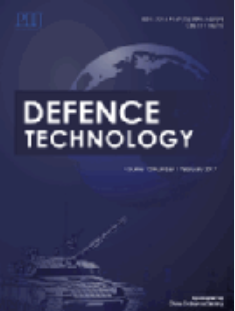FDM - 3D printing of thermoplastic composites with high energetic solids content designed for gun propellants
IF 5
Q1 ENGINEERING, MULTIDISCIPLINARY
引用次数: 0
Abstract
This study represents an important step forward in the domain of additive manufacturing of energetic materials. It presents the successful formulation and fabrication by 3D printing of gun propellants using Fused Deposition Modeling (FDM) technology, highlighting the immense potential of this innovative approach. The use of FDM additive manufacturing technology to print gun propellants is a significant advancement due to its novel application in this field, which has not been previously reported. Through this study, the potential of FDM 3D-printing in the production of high-performance energetic composites is demonstrated, and also a new standard for manufacturability in this field can be established. The thermoplastic composites developed in this study are characterized by a notably high energetic solids content, comprising 70% hexogen (RDX) and 10% nitrocellulose (NC), which surpasses the conventional limit of 60% energetic solids typically achieved in stereolithography and light-curing 3D printing methods. The primary objective of the study was to optimize the formulation, enhance performance, and establish an equilibrium between printability and propellant efficacy. Among the three energetic formulations developed for 3D printing feedstock, only two were suitable for printing via the FDM technique. Notably, the formulation consisting of 70% RDX, 10% NC, and 20% polycaprolactone (PCL) emerged as the most advantageous option for gun propellants, owing to its exceptional processability, ease of printability, and high energetic performance.

FDM - 3D打印具有高能量固体含量的热塑性复合材料,专为枪支推进剂设计
这项研究代表了含能材料增材制造领域向前迈出的重要一步。它展示了使用熔融沉积建模(FDM)技术通过3D打印枪推进剂的成功配方和制造,突出了这种创新方法的巨大潜力。使用FDM增材制造技术打印火炮推进剂是一项重大进步,因为它在该领域的应用新颖,以前没有报道过。通过本研究,展示了FDM 3d打印在高性能高能复合材料生产中的潜力,也为该领域的可制造性建立了新的标准。在本研究中开发的热塑性复合材料的特点是具有非常高的高能固体含量,包括70%的hexogen (RDX)和10%的硝化纤维素(NC),这超过了传统的60%的高能固体的限制,通常在立体光印和光固化3D打印方法中实现。该研究的主要目的是优化配方,提高性能,并在印刷性和推进剂功效之间建立平衡。在为3D打印原料开发的三种高能配方中,只有两种适合通过FDM技术进行打印。值得注意的是,该配方由70% RDX, 10% NC和20%聚己内酯(PCL)组成,由于其卓越的可加工性,易于印刷性和高能量性能,成为火炮推进剂的最有利选择。
本文章由计算机程序翻译,如有差异,请以英文原文为准。
求助全文
约1分钟内获得全文
求助全文
来源期刊

Defence Technology(防务技术)
Mechanical Engineering, Control and Systems Engineering, Industrial and Manufacturing Engineering
CiteScore
8.70
自引率
0.00%
发文量
728
审稿时长
25 days
期刊介绍:
Defence Technology, a peer reviewed journal, is published monthly and aims to become the best international academic exchange platform for the research related to defence technology. It publishes original research papers having direct bearing on defence, with a balanced coverage on analytical, experimental, numerical simulation and applied investigations. It covers various disciplines of science, technology and engineering.
 求助内容:
求助内容: 应助结果提醒方式:
应助结果提醒方式:


